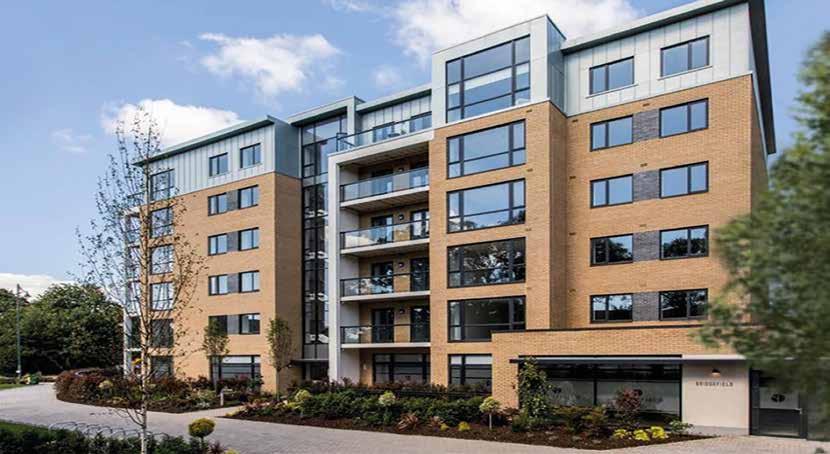CASE STUDY
Poplar Row residential scheme comprising 29 apartments.
One of the first projects on which new Covid-19 operating procedures were introduced, as it was approved by Dublin City Council to reopen early after the first lockdown, Monami Construction’s Poplar Row, Dublin, residential scheme presented significant logistics challenges. But the contractor delivered with minimal delay.
W
hile the overall construction sector reopened in May 2020 after the first Covid-19 shutdown, Monami Construction’s Poplar Row, Dublin, residential project for approved housing body Oaklee Housing received a dispensation to reopen in April. It was one of three projects to receive this designation through Dublin City Council. As it was one of the first sites to reopen, it was closely monitored at the time to see if it could operate successfully, strictly adhering to HSE and government Covid-19 public health guidelines and the Return To Work Safely Protocol.
THE BRIEF
Before all of this happened, Monami Construction had been making steady progress on the project located close to Croke Park between Ballybough Road and Annesley Bridge Road. The brief from Oaklee Housing was for the partial demolition of original four-storey buildings on the site and construction of a new five-storey block to provide housing for older people in the community. The project comprises 29 apartments with balconies. The apartment block includes 25 one-bed apartments, four two-bed apartments, and a maintenance unit with associated storage.
CHALLENGES
As well as being on a busy road, the construction site was tight and presented several logistics challenges.
30 irishconstructionnews May 2021
Darran Hennessy, Contracts Director, Monami Construction, explains some of the challenges faced: “As the development occupied the entire footprint of the site, justin-time deliveries were essential due to the minimal storage space available. “A section of public roadway was procured from Dublin City Council to allow a delivery drop-off and set-down area. We temporarily re-aligned the traffic lanes to ensure the safe movement of pedestrians and vehicles. “We had a prolonged period of inclement weather when high winds impacted the superstructure works,” he continues. “However, to ensure progress was maintained, the steel-frame element proceeded, and the concrete frame element followed when weather conditions allowed us to do so.” He adds that local groups were given regular briefings on the project’s status due to its location in a residential community. “Look-ahead programmes were posted on the site hoardings regularly, plus site management attended community meetings to liaise directly with any parties that expressed concern. Once Covid-19 restrictions were introduced, these meetings were moved to the virtual space.” Construction on the east and west boundaries of the building presented challenges. “Some of the work was carried out above occupied residences,” Hennessy explains. “A cantilevered scaffolding design was successfully implemented on site, which

















